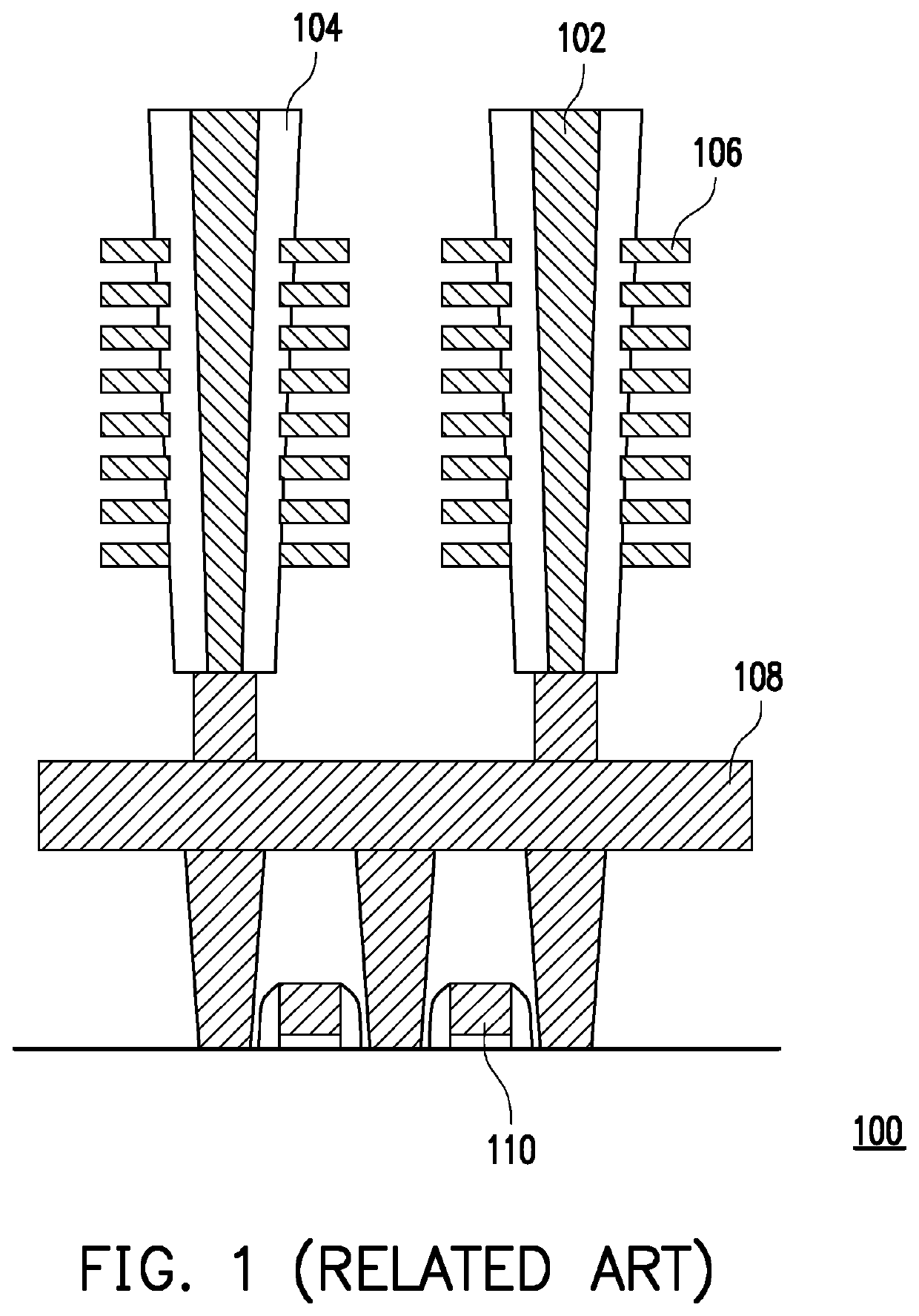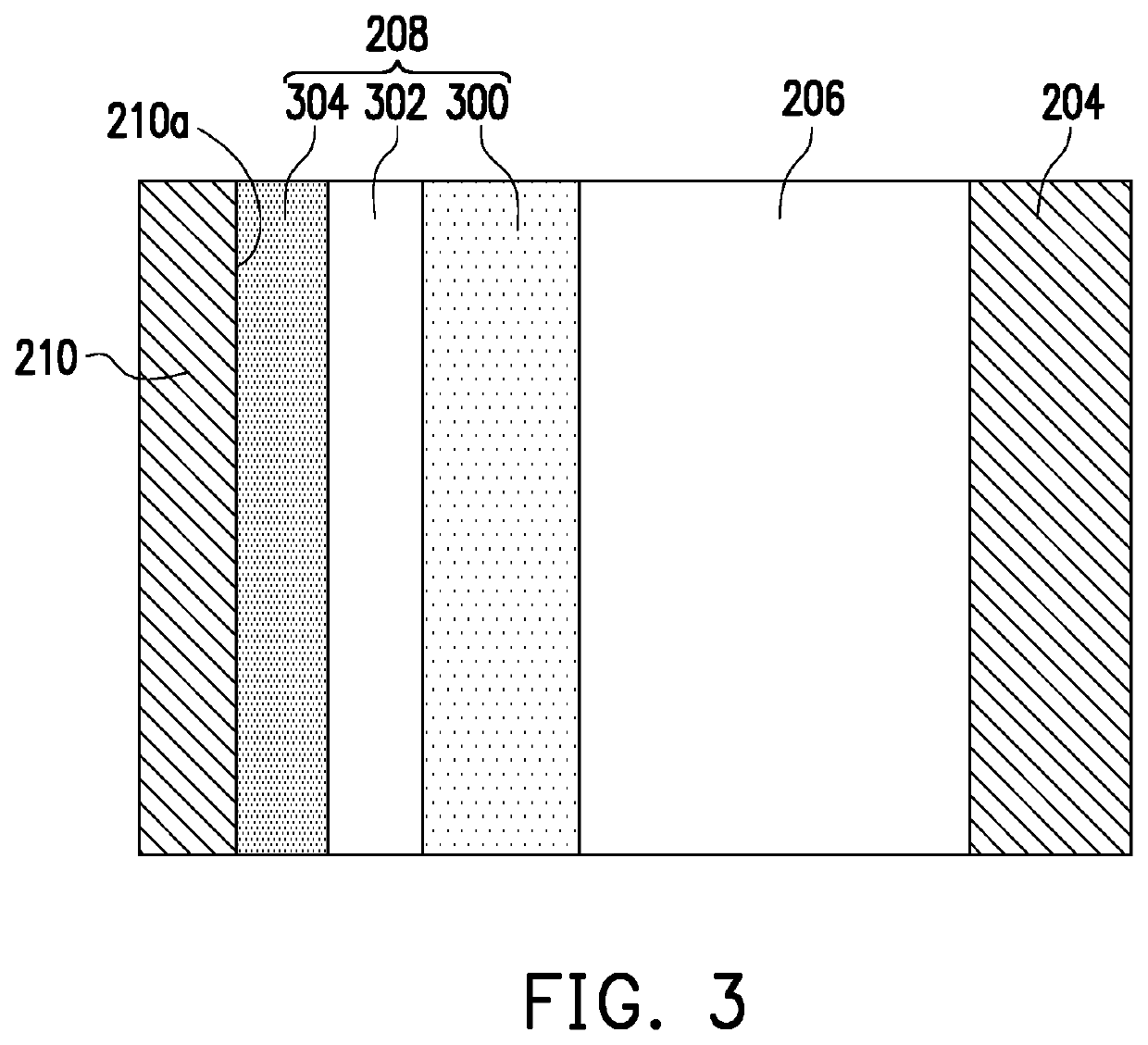Resistive random access memory and manufacturing method thereof
- Summary
- Abstract
- Description
- Claims
- Application Information
AI Technical Summary
Benefits of technology
Problems solved by technology
Method used
Image
Examples
first embodiment
[0033]FIG. 2 is a cross-sectional schematic view of a resistive random access memory according to the disclosure. FIG. 3 is an enlarged schematic view of a portion P of FIG. 2.
[0034]Referring to FIG. 2, a resistive random access memory 200 of the first embodiment includes a stacked structure 202, at least one vertical electrode 204, a selector element 206, and a plurality of resistance changeable structures 208. It shall be stated that although FIG. 2 only illustrates one vertical electrode 204, the number of vertical electrodes 204 may be adjusted according to process design requirements and the disclosure is not limited thereto.
[0035]In the embodiment, the stacked structure 202 is formed by a plurality of horizontal electrodes 210 and a plurality of first dielectric layers 212 stacked alternately. It shall be noted that the number of the horizontal electrodes 210 and the first dielectric layers 212 illustrated in FIG. 2 is respectively 7 layers and 8 layers, and the horizontal ele...
second embodiment
[0039]FIG. 4 is a cross-sectional schematic view of a resistive random access memory according to the disclosure. FIG. 5A, FIG. 5B, and FIG. 5C are respectively a portion P1, a portion P2, and a portion P3 of FIG. 4.
[0040]Referring to FIG. 4, the difference between a resistive random access memory 400 and the resistive random access memory 200 lies in the difference between the structure of a selector element 406 and the structure of the selector element 206. For example, the selector element 406 is, for example, a MOS device including a gate layer 410, a gate insulating layer 412, and a channel layer 414. The gate layer 410 is in contact with the vertical electrode 204, the channel layer 414 is in contact with the oxide layer 300 (as shown in FIG. 5B), and the gate insulating layer 412 is disposed between the channel layer 414 and the gate layer 410. Since the MOS device of the second embodiment is present in the channel hole 214, as compared to FIG. 1 which sets the MOS device in ...
PUM
 Login to View More
Login to View More Abstract
Description
Claims
Application Information
 Login to View More
Login to View More - R&D
- Intellectual Property
- Life Sciences
- Materials
- Tech Scout
- Unparalleled Data Quality
- Higher Quality Content
- 60% Fewer Hallucinations
Browse by: Latest US Patents, China's latest patents, Technical Efficacy Thesaurus, Application Domain, Technology Topic, Popular Technical Reports.
© 2025 PatSnap. All rights reserved.Legal|Privacy policy|Modern Slavery Act Transparency Statement|Sitemap|About US| Contact US: help@patsnap.com



